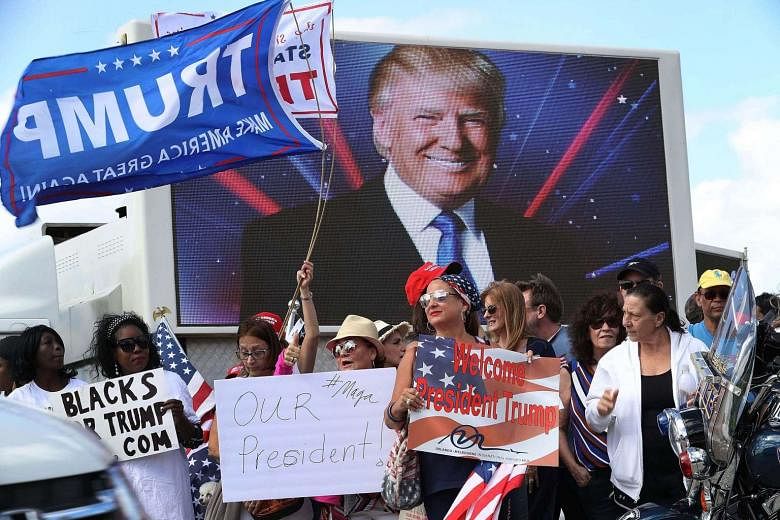Whatever confusion people might have about US President Donald Trump's agenda, his position on trade and manufacturing is crystal clear. "I believe strongly in free trade, but it also has to be fair trade," he said in his address to Congress on Tuesday. He called for corporate tax reform and export incentives, and lashed out at the North American Free Trade Agreement and China for draining America's manufacturing base.
Mr Trump's stance on trade is one of his most popular positions, but many economists and policymakers are sceptical. They say rapid automation will negate any gains made in bringing manufacturing jobs back, while the tariffs and other policies he has suggested using will ignite disastrous trade wars.
The doubters are wrong on both points. American manufacturing's most advanced sectors remain big employers, and much of their payroll shrinkage stems from predatory competition from high- and low-wage countries, as well as offshoring by American multinationals. And the trade war alarmists overlook the matchless, yet overwhelmingly neglected, leverage the United States holds over the global economy.
Although cheap, labour-intensive goods often come to mind when Americans think of job-displacing imports, the more capital- and technology-intensive segments of manufacturing have hardly been immune. Sectors like motor vehicles and parts, pharmaceuticals, telecommunications equipment, non-electrical machinery (like machine tools, farm machinery and power-generating turbines) and industrial chemicals add up to nearly half of manufacturing's enormous, chronic annual trade deficits nowadays.
Such sectors still employ millions of Americans. For example, more than 947,900 jobs are currently found in automotive production (including 145,700 in the highest-value segments, like engines and power trains and their parts), nearly 360,000 in semiconductor and related manufacturing, more than one million in machinery, and more than 200,000 in pharmaceuticals.
And a recent Commerce Department report indicates that in 2014, their trade shortfalls alone - leaving aside any impact from labour-saving technologies - cost more than 200,000 jobs, both in the industries themselves and throughout their American supply and logistics chains.
Since then, moreover, trade deficits in advanced manufacturing have worsened, and the stagnation of productivity growth suggests that the robots have been replacing fewer workers. So trade-related job loss in these sectors surely has grown - and smart, pro-domestic manufacturing policies can bring them back. As for trade war alarmists, they apparently assume that the same countries that rely so heavily on exports to the US for their growth, economic development and employment will unleash attacks on their biggest and best customer.
The US is not only the world's biggest single national economy, but for all its recent sluggishness, it has also generally been the fastest-growing major economy, and it is the most open to imports.
That's why it's the single largest export market for a fifth of the world's countries. That's why it has remained the world's largest consumer of foreign goods, despite slashing its previously huge purchases of foreign oil.
That's largely why each percentage point of new American growth lifts global growth by much more than similar expansion in China, and nearly as much as growth in the euro zone - which, unlike the US, is relatively poor in natural resources and needs to buy many more commodities from overseas.
That's also why nearly all leading countries and groupings - including the euro zone - have long-run trade surpluses with the US. The US plays an even more central role in countries that have come into Mr Trump's trade crosshairs.
Slow-growing Mexico, for example, would be performing much more sluggishly if it were not able to export the equivalent of 28 per cent of its annual economic output to the US. Its car shipments to the US alone are its biggest generator of foreign exchange reserves.
True, China's economy is stronger and gradually becoming less export-dependent than Mexico's, but its growth slowdown has been crucially contained by the US$600 billion or S$846 billion (by its own dubious count) global trade surplus it amassed last year - nearly half of which is run with the US. Indeed, China's sales to America constituted 4.4 per cent of its annual economic output in 2015.
Further, the numbers don't tell the whole story. After all, governments in institutionally weak countries like Mexico, or undemocratic countries like China, tend to stay in power by lifting national living standards. Losing unfettered access to the American market could undermine the leaderships in both countries.
It's unclear which trade measures Mr Trump will use to draw factories and their workers stateside. Nor has he announced domestic policies to aid these efforts. But the official manufacturing job and trade statistics make entirely obvious that the rewards to the American economy will be substantial. And as Mr Trump's speech on Tuesday made clear, America has a president who understands its ample power to reap them.
NYTIMES
•The writer is the founder of RealityChek, a blog on economic and national security policy, and the author of The Race To The Bottom. He advised both the Donald Trump and Bernie Sanders campaigns on trade policy.

